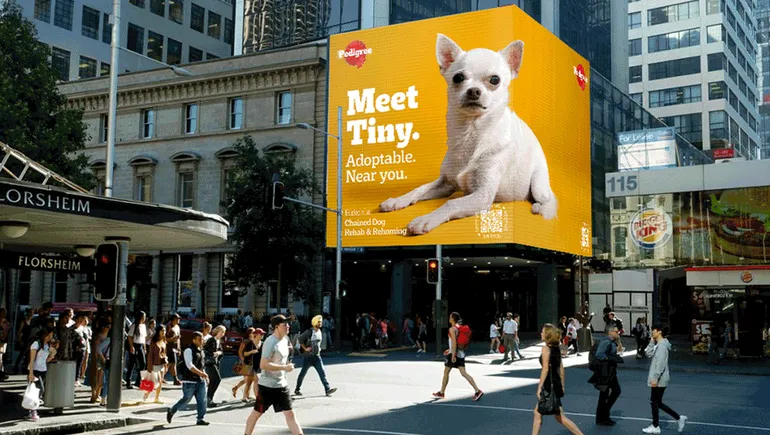
5 Industries Getting the Most ROI From Digital Marketing
In our computer-driven and mobile world, digital marketing is how relationships get built. Gone are the days of old-fashioned marketing plans consisting solely of in-person events and traditional media. Instead, outreach through email and social networks are now crucial to every company’s marketing efforts. It’s a real adapt or die situation, and so far, the overwhelming majority of companies have adapted and shaped up for these new marketing channels. According to a recent study by Smart Insights, 82 percent of businesses have a defined strategy for digital marketing, either in their marketing plan or in a separate digital plan.
As consumers, we’ve all been the target of these digital marketing efforts.
Our inboxes are filled daily with emails from businesses, and our social media feeds are peppered with photos and videos encouraging us to try the products and services of companies we either follow or are, according to the advertising algorithms, companies we’d probably want to follow. Clearly, the message is out.
But in the midst of all this digital marketing bombardment, a big question looms — is it worth it? Are companies getting a solid ROI, or return on investment, on their digital marketing efforts? Are the followers clicking, are the customers buying, and are their individual brands rising in the global marketplace? The numbers say yes as most companies are seeing at least $5 in revenue for every $1 spent on digital marketing. Clearly, though, the ROI on digital marketing is more for some sectors than for others.
Here are five industries that are getting high ROI from their digital marketing efforts.
1. Law.
It may come as a bit of a surprise, but make no mistake, the legal industry is killing it when it comes to digital marketing. While it may not be an entirely strategic move, according to Greentarget’s 2014 State of Digital & Content Marketing Survey, just one in four law firms had a specific content marketing strategy. Where law firms are standing out is in blogging.
Attorneys are intelligent individuals who specialize in communication. Specifically, they’re good at explaining how the law works and how to finesse your way through an argument. On their individual firms’ blogs, on LinkedIn, and on prominent websites like Medium and Huffington Post, these attorneys are writing helpful blog posts on specific legal topics. People find them and read them, and those firms gain clients as a result. It’s a strategy that provides a robust ROI because, for these law firms, they’re not investing too much financially, yet they’re getting a whole lot in return, as further explained in this Huffington Post article.
2. Health.
When you’ve got a question about your health, what’s the first thing you do? If you’re like more than three-quarters of internet users — 77 percent, according to the Pew Research Center’s Health Online 2013 study — you check online to find out more information. While doctors are clearly still a significant part of the picture, the plain truth is that they’re not the first place people go to access health information. That’s why a good digital marketing approach for healthcare organizations and individual doctors is so crucial. A good website, a solid social media presence, easy to read infographics and health information that’s been optimized for search engines all make a good impression and bring in patients.
3. Auto.
Marketing has always been a huge part of the auto industry. Flashy television commercials, slick magazine advertisements and newspaper ads promising the best deals on the newest models have been standard for a long time. Lately, however, digital marketing has become one of the auto industry’s most important channels for reaching potential customers. According to eMarketer, spending on advertising in traditional media by all major auto companies is following a downward trend, while spending on digital advertising is increasing every year. In fact, from 2014 to 2015, it rose almost 22 percent.
A primary reason for this growth is that digital marketing allows automakers to customize the marketing experience for different demographics — thanks to personal information available through social media, a baby boomer, for example, will be engaged with differently than, say, a millennial. Rather than waiting for viewers or readers to come to the advertising, automakers are bringing the advertising directly to the customers.
4. Entertainment.
Social media has become the place for entertainment companies to share all sorts of information — photos, trailers, behind the scenes looks, even live videos. More than that, though, it’s a place where these companies plant ideas in followers’ heads — go see this movie, don’t forget to DVR this show, tell your friends about how much you loved this live experience.
With the personal information obtainable on social media, coupled with in-depth analytics to promote specific entertainment products to certain demographics, the ROI for entertainment companies’ digital marketing efforts is higher than with traditional media, which was considerably less targeted. According to a recent explanation on TrackMaven, this is all thanks to improved engagement with fans, better segmentation of the market and improved marketing metrics for re-targeting specific demographics.
5. Food.
People have a real emotional connection to the food they love, and they’re fiercely loyal to favorite products. Well aware of this, food companies have responded in force with image-laden social media campaigns containing tons of sensory appeal and a high degree of direct customer engagement.
“The food industry is no longer dependent on boring recipe cards, or words in a book,” said Mat Siltala, President of Avalaunch Media. “Consumers now go online, they check out social feeds and watch amazing videos that share in just a few seconds how to prepare almost anything you can imagine.”
These efforts allow users to be drawn in. They’re made to feel that the companies actually care about their eating preferences, and the results are impressive. This 2014 case study from Digital Training Academy looks at five digital marketing campaigns and shows how both traffic and sales got a boost from each one.
[ad_1]




